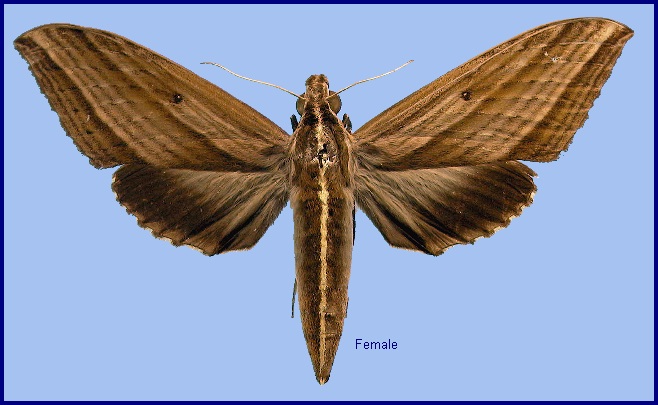
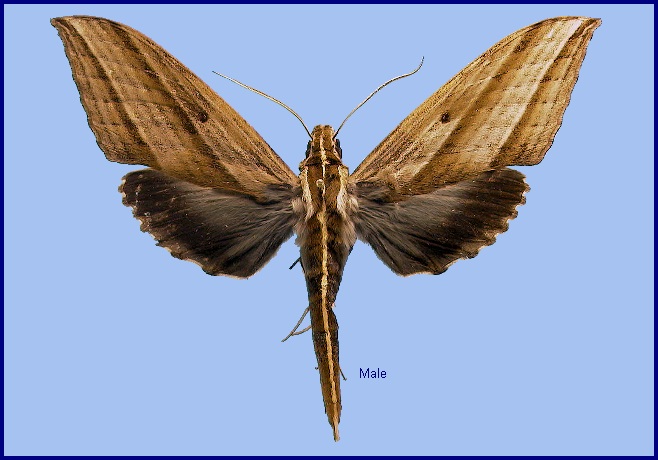
Sphinx (Choerocampa) dolichus Westwood, 1847, Cabinet oriental Ent.: [61], pl. 30, fig. 1. Type locality: [Bangladesh,] Silhet [Sylhet].
Synonym. Sphinx dolichus Westwood, 1847.
Wingspan: 120--146mm. Forewing upperside with five oblique postmedian lines, first and fifth strongly marked, the remainder weak; all but first sometimes accentuated by vein-dots; discal spot large, black with white centre. Hindwing upperside bluish-grey over basal half; distal half dark brown. Upperside of thorax and abdomen with a strong median longitudinal cream line. Abdomen underside white, with orange-brown or brown median spots on proximal sternites.
In the male genitalia, uncus slightly narrowed medially, apex truncate with rounded angles. Gnathos as long as uncus, strongly compressed, broad vertically, ventral line strongly curved dorsad in lateral view, the apex rounded in dorsal view. Valve with large tapering (not truncate) stridulatory scales. Harpe short, just a rather thin ridge, truncate distally and weakly angled dorsally. Phallus nearly symmetrical, both left and right lobes of apical process denticulate on edges and surface, denticulation of the left continued onto the body of the phallus.
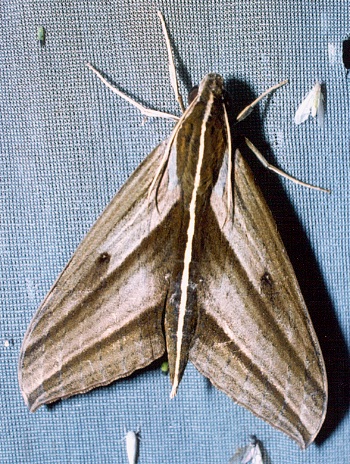
China: 9.vii (Xishuangbanna, Yunnan).
OVUM: Unrecorded.
LARVA: Three stages figured by Piepers (1897); a round dorsal eye-spot on fourth segment; horn curved frontad in earlier stages, reduced to a button-like prominence in last stage.
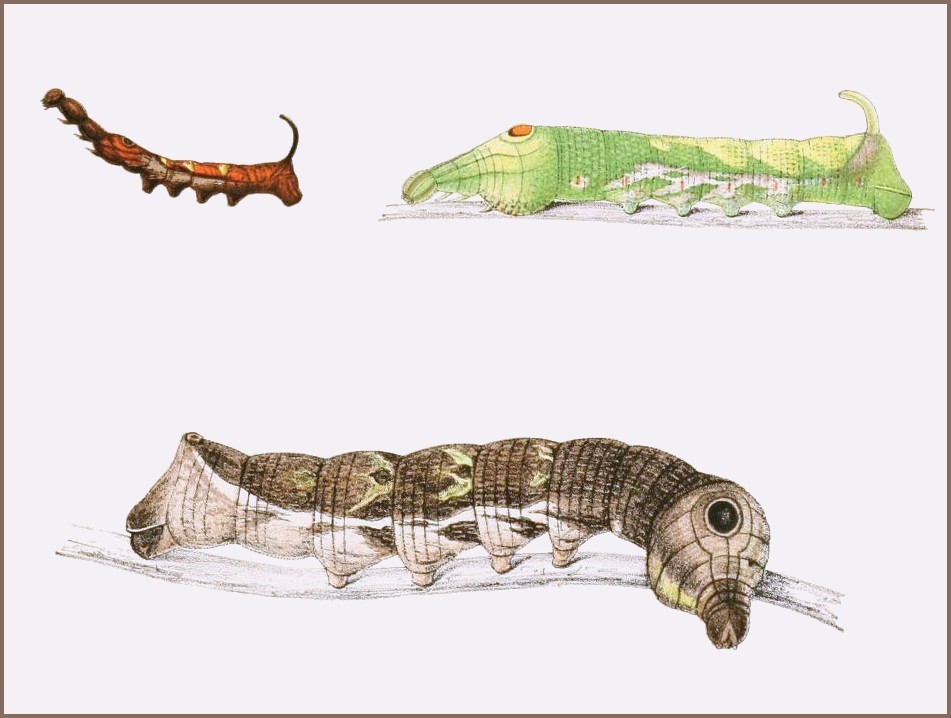
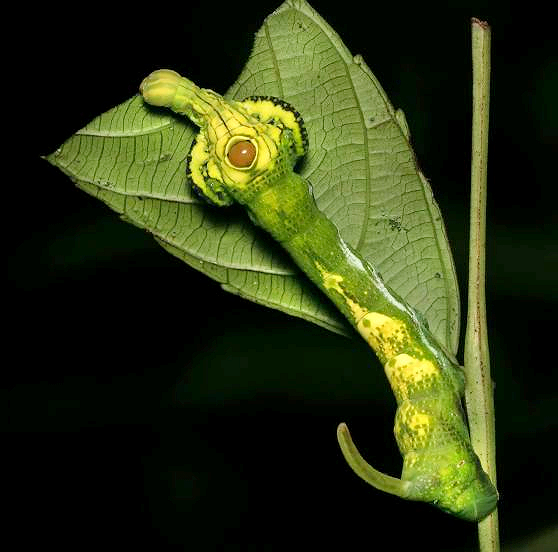
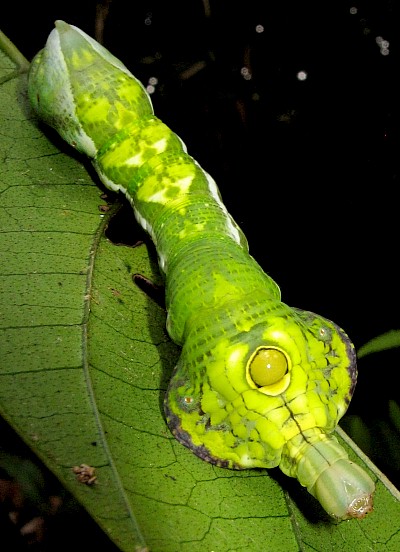
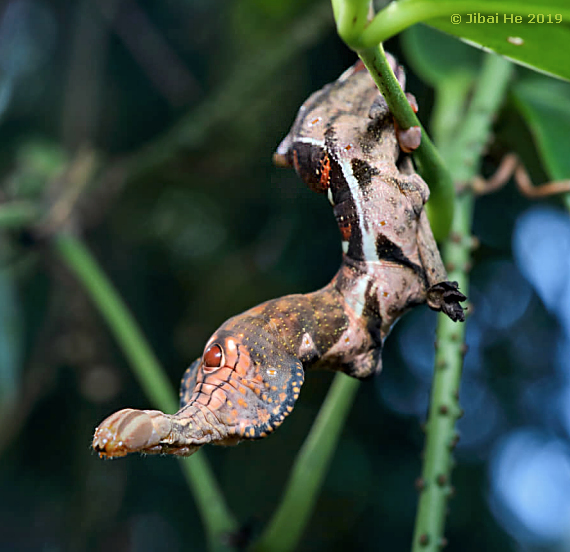
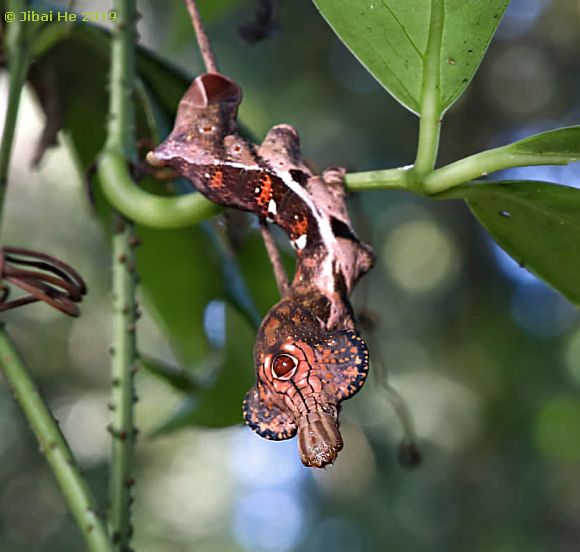
PUPA:
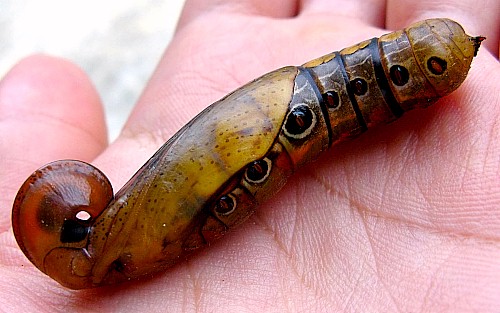
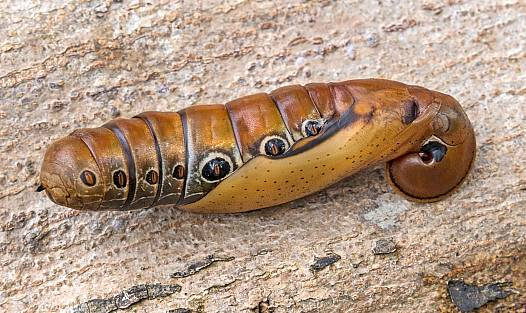
Larval hostplants. Saurauia, Leea, Cayratia and Tetrastigma (Inoue, Kennett & Kitching, [1996] 1997).
Unknown.
China: Yunnan (Gaoligong Shan; Simao/Pu'er; Xishuangbanna; Xishuangbanna Tropical Botanic Garden, Menglunzhen); Guangdong; Guangxi (Baise); Hainan (Shifan Gate; Wuzhi Shan; Shuimanxiang; Diaoluoshan National Forest Park; Lingshui Li Autonomous County; Changjiang Li Autonomous County; Jianfengling National Forest Park; Pingchedao).
Nepal, Bhutan, northeastern India, Bangladesh, Thailand, Laos (Spitsyn, Burchalovskaia & Spitsyna, 2022), southern China, central Vietnam (Le & Vu, 2024), Malaysia (Peninsular, Sarawak, Sabah), Indonesia (Sumatra, Kalimantan, Java) to the Philippines (Palawan Island) (Inoue, 1996).
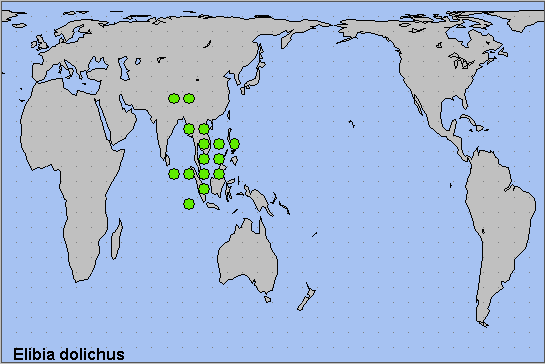
 Return to Sphingidae of the Eastern Palaearctic species list
Return to Sphingidae of the Eastern Palaearctic species list